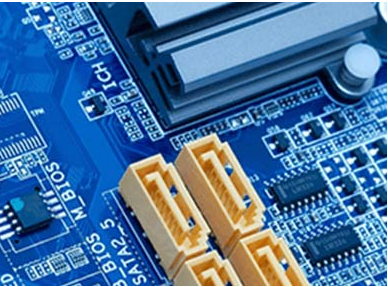In the flexible circuit board FPC, copper foil is used as a base material, which is well known. However, few people know how it is made.
At present, there are two types of copper foil used in flexible circuit board FPC; 1. rolled and annealed copper foil (also known as wrought copper foil); 2. electrolytic copper foil.
Copper foil is widely used in flexible circuit board FPC, but how is it made?
The manufacturing method of copper foil is either rolling annealing or electrolysis. These methods determine their mechanical paradox. According to the mechanical properties and applications of copper foil, each type of copper foil is further divided into different grades. Electrolytic copper foil and wrought copper foil are divided into four grades (Savage. 1992). Usually electrolytic copper foil is grade 1-4, used in rigid printed circuit boards. Flexible circuit board FPC uses all electrolytic copper foil and wrought copper foil grade 5-8. Typical levels 2, 5, 7 and 8 are used in flexible laminates.
1, electrolytic copper foil
The manufacturing of electrolytic copper foil is to electroplate copper ions onto a cylindrical cathode, and the copper foil is continuously peeled off from the top. Electrolytic copper foil has a columnar grain structure. When the copper foil is bent, the particles are separated, which makes the flexibility and resistance of the copper foil smaller than that of the rolled and annealed copper foil when the copper foil is bent.

The beginning of the electrolysis process is to decompose copper from the sulfuric acid solution, and the decomposition rate is controlled by temperature and agitation. The appearance and mechanical properties of copper foil may be controlled by using different types of additives.
The copper solution is continuously injected into the electrolytic cell. Under the action of the current between the anode and the cathode of the electrolytic cell, copper ions are precipitated from the chemical cell to the surface of the cathode. The cathode is a rotating cylindrical drum, one part of which is immersed in the solution. When the cathode enters the solution, copper begins to deposit on the surface of the drum, and electroplating continues until the drum leaves the solution. When the cathode continues to rotate, the copper foil peels off from the cathode. The rotation speed of the cathode drum determines the thickness of the copper foil, and the electrolysis process can produce copper foils of many thicknesses and widths.
Whether forged or electrolyzed, the original copper foil product needs to be processed in three stages.
1) Bonding (fixing) treatment; this treatment usually includes metal copper/copper oxide treatment, which increases the surface area of copper and provides better wettability for the binder or resin.
2) Heat resistance treatment; this treatment enables the copper clad laminate to withstand the high temperature environment in the printed circuit board manufacturing process.
3) Stability treatment; this treatment is also called passivation or anti-oxidation. This treatment is applied on both sides of copper to prevent oxidation and coloring. All stabilization treatments are based on aluminum alloys, and some manufacturers combine nickel, zinc and other metals with lead.
After treatment, the copper coil is cut to the required width, and the core of the cut is wrapped with plastic film to prevent oxidation.
The ductility of copper foil is as follows:
1) Electrolytic copper foil: extend 4% -40%.
2) Rolled and annealed copper foil: 20% -45% extension.
Copper foil is usually covered with a film made from polyimide or liquid polymer ficus fluid. After this treatment, the conductor film can protect the copper sink for a long time from the corrosive environment and solder contamination.
2, rolled annealed copper foil
The manufacture of rolled annealed copper foil requires first heating the copper chains, and then sending them into a series of rollers to reduce them to a specified thickness of copper foil. The rotation creates grain structures in the copper foil, which look like overlapping horizontal planes. Under the action of pressure and temperature, copper particles of different sizes interact with each other, which makes the properties of copper foil, such as ductility and
hardness, but also produces a smooth surface. Compared with electrolytic copper foil, the copper foil produced by this production process can withstand greater repeated bending.
However, its disadvantage is that the cost is higher, and the thickness and width of the copper foil are less optional.
Copper foil is usually covered with a film made from polyimide or liquid polymer ficus. After this treatment, the conductor film can protect the copper sink for a long time from the corrosive environment and solder contamination.
The above is the introduction about how the copper foil in the flexible circuit board is manufactured.